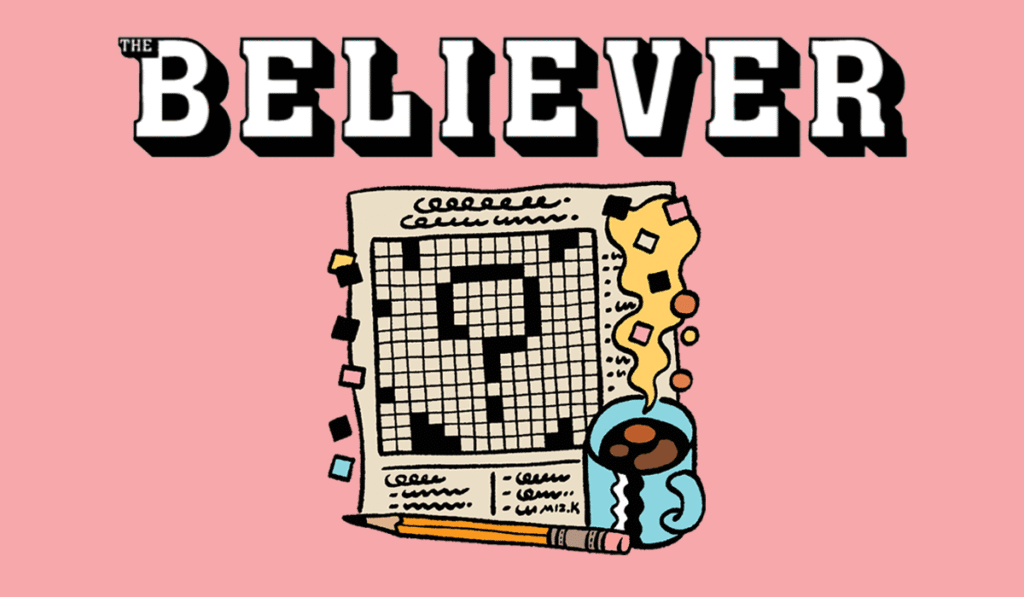– – –
FEATURES:
- Black squares
- White squares
- Seeming gibberish
– – –
Solving a cryptic is a bit like chewing over a confounding poem. Words that begin as the unlikeliest of associates end up somehow being apt neighbors, relating to one another in a way that makes sense, or at least a kind of sense. Good writing can say something without actually saying it, which is also what cryptic clues do: There is meaning in there somewhere, though it’s hidden beneath a layer of syntactic legerdemain. OK, so lines of poetry are not codes to be broken, and works of literature are not puzzles with definitive interpretive solutions (a lesson I learned despite the best efforts of an algebraically minded high school English teacher). But crosswords do have definitive answers, and finding out what they are can be immensely satisfying to one’s sense of linguistic command. Imagine having the power to break down gibberish and reassemble it as sense! Anagrams and synonyms and homophones and abbreviations and even spoonerisms are brought to bear until inspiration strikes, and your pen (solving should be a screen-free activity) fills a column or row of vacant squares. One down: many more to go.
I’m going to assume you’re au fait with the kind of crossword printed in, say, The New York Times. This is the kind where the clue is generally a “definition,” another way of expressing the answer. “One way to make a hole” could be BORING; “Unvarnished” might be DULL; et cetera. There may be some misdirection involved—in a perfect world, “Dodge charger, e.g.?” would be BULLFIGHT—but there’s always an equivalence between the entire clue and its answer. In a cryptic, the definition is only half the clue. The other half is wordplay, which is a second means of arriving at the correct answer. It can take many forms, but often it’s a second definition, as in “Poet’s currency” for POUND. Anagrams are also common, as in “Book van crashed into lepidopterist” for NABOKOV, who, incidentally, loved crosswords and once made one for Véra in the shape of a butterfly. In that example, crashed is part of the wordplay because it suggests an anagram: It’s a kind of recipe direction to “crash” together the letters of book and van. Then there’s the container clue, all the more devious because it places the answer right under your nose: “Artiste inadvertently shaved Toklas autobiographer.”
With a cryptic clue, your job is to work out which bit is the definition and which bit is the wordplay, and find an answer that satisfies both. It isn’t necessarily harder than a New York Times–style clue, but it is multidimensional where the other type usually isn’t. Cryptics demand the closest of readings. Words may be needed for their surface meanings or for their atomic constitution, and different elements will interact differently. Put another way, you need to spot the STEIN in “ArtiSTE INadvertently.” If this sounds suspiciously similar to dad-jokery, you’re not wrong. Puns tend to play an outsize role in cryptics, a fact that often earns me a raised eyebrow when I gush about these puzzles to People Who Take Literature Very Seriously. But lately, I’ve begun to defend myself against such superciliary attacks. Never mind the fact that double meanings are everywhere in literature, from Shakespeare to the titles of every single academic paper ever written—wordplay is part of complexity in writing and therefore part of the pleasure we get from reading. Take the Christine Schutt line quoted in a Garielle Lutz essay in this magazine, “The Sentence Is a Lonely Place”: “Here is the house at night, lit up tall and tallowy.” As Lutz points out, the final word choice is both astounding and perfect. And the joy of that magnetic tension between the adjectives (these words don’t belong together, except that they do) is a cousin of what a cryptic crossword setter is trying to tease out of their solver. It’s no replacement for reading, but sometimes it’s nice to look at a line of impossibility and know that resolution and sense are in there somewhere, on the other side of wordplay.
– – –
See other essays, interviews, poems, and more over at The Believer.

